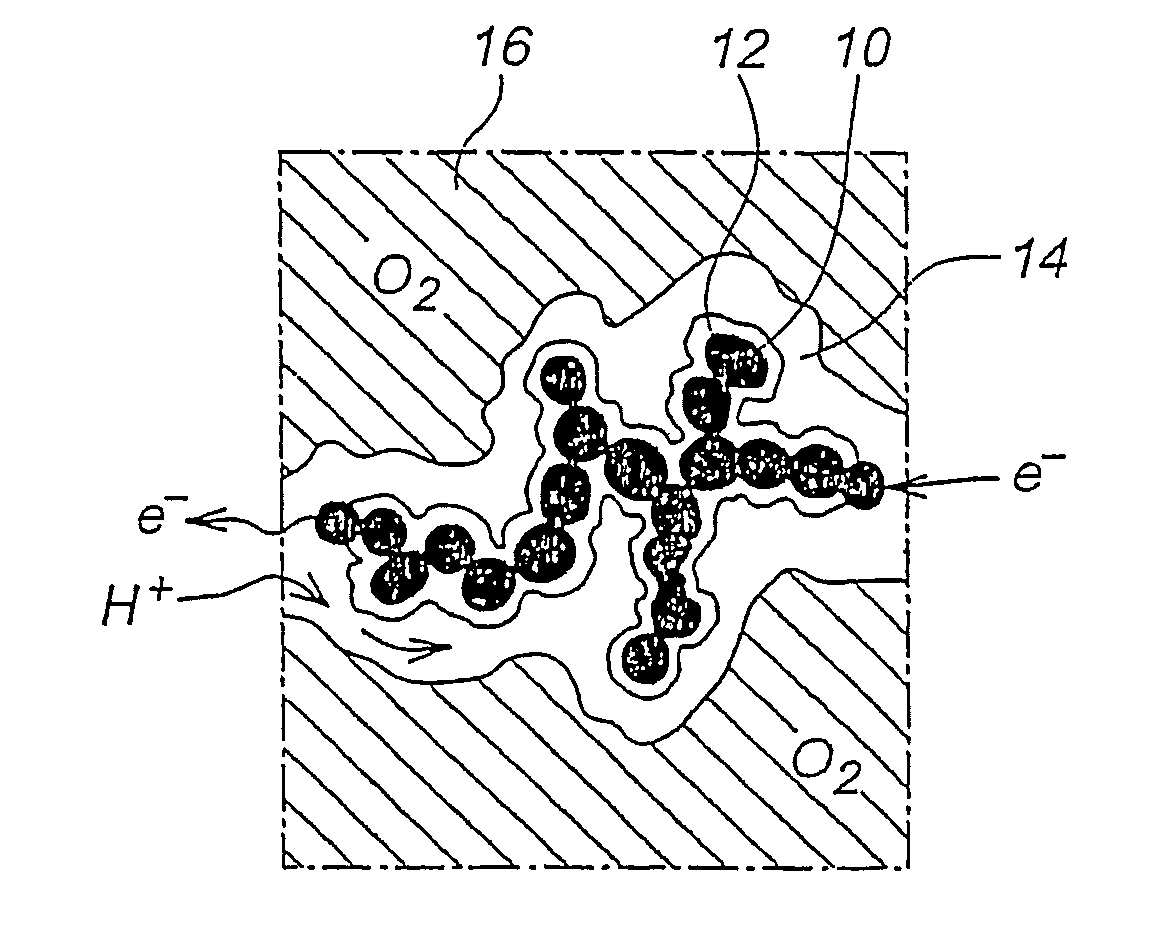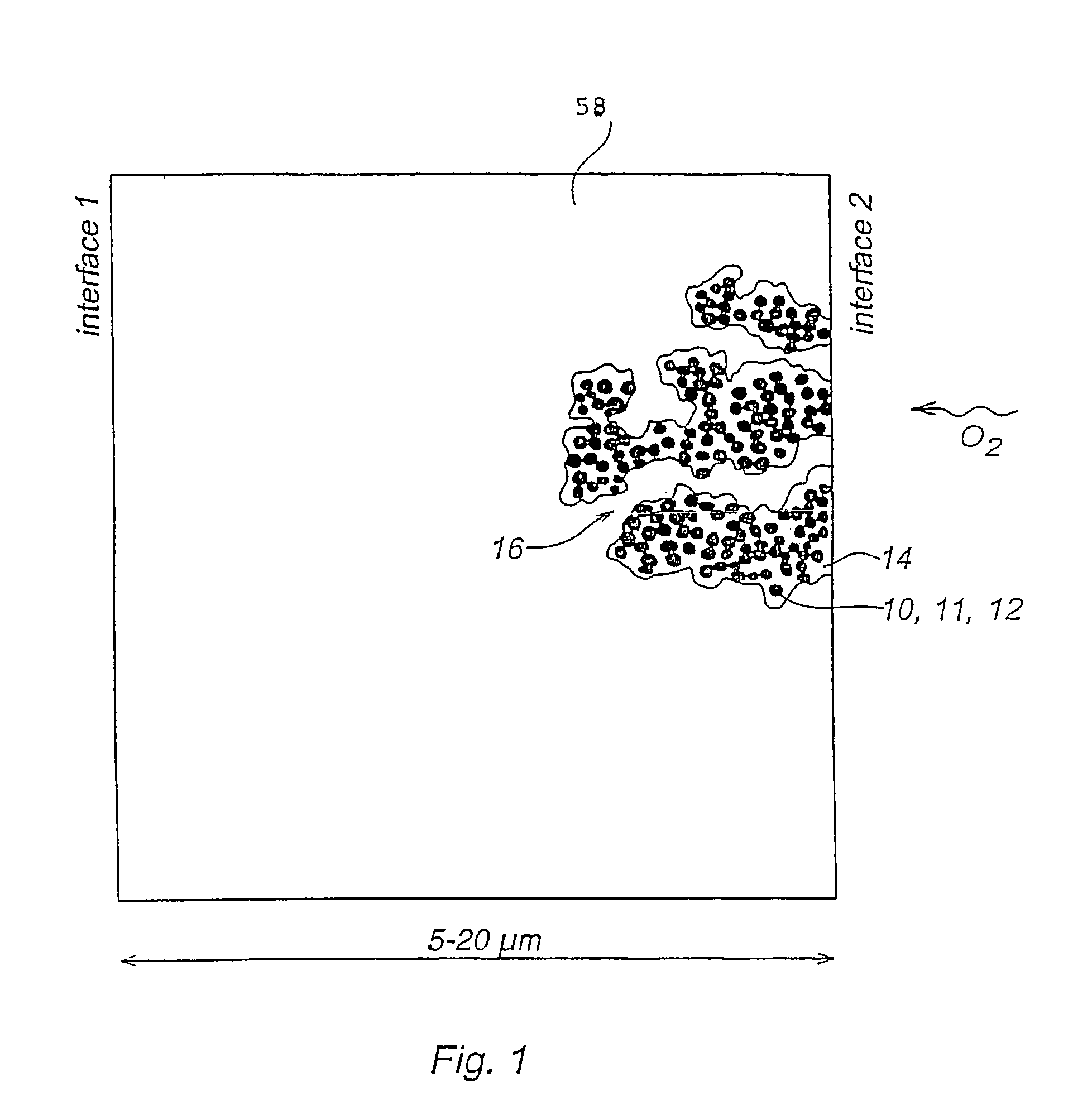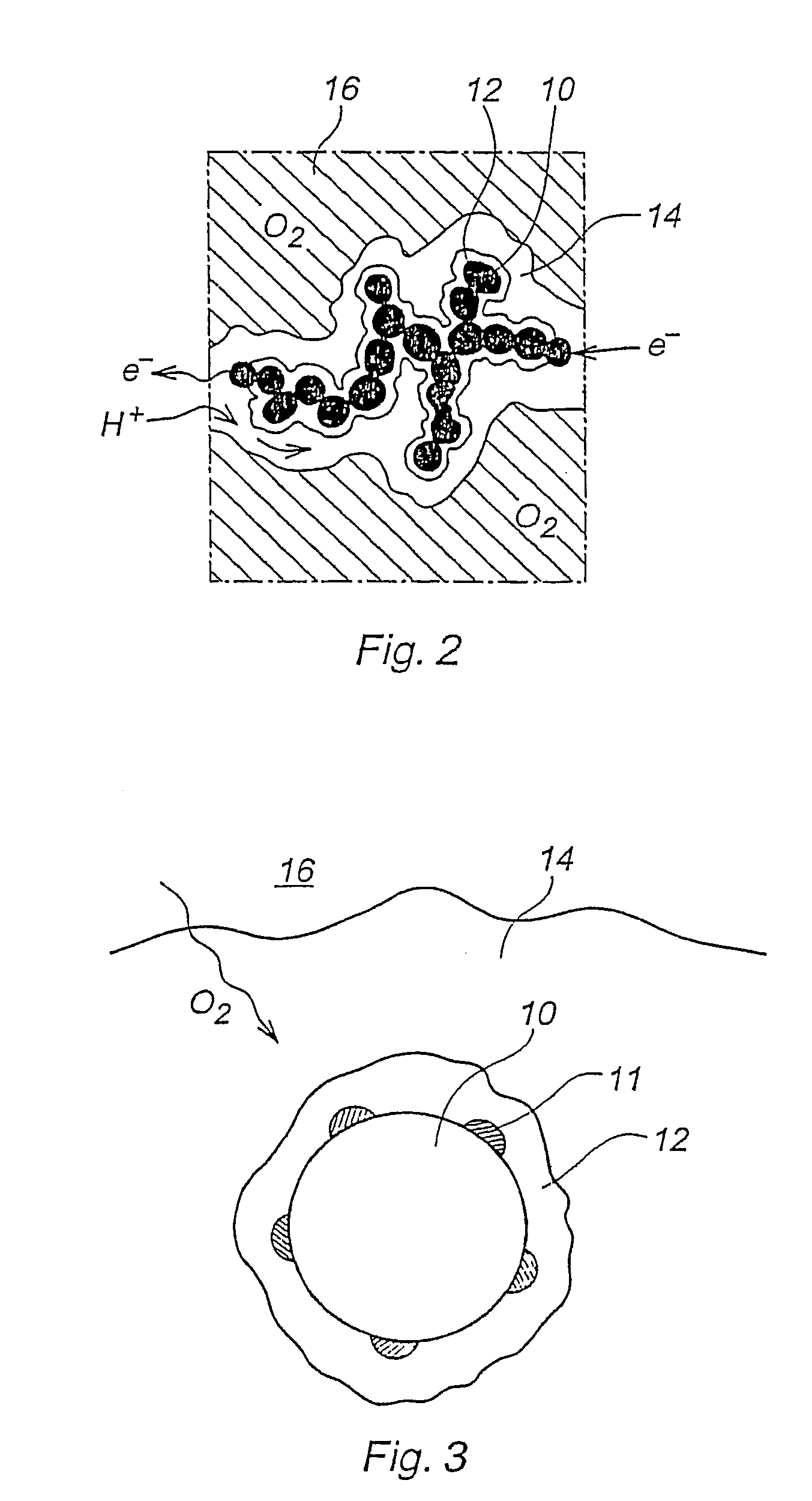Cathode layer structure for a solid polymer fuel cell and fuel cell incorporating such structure
a solid polymer fuel cell and cathode layer technology, which is applied in the direction of cell components, electrochemical generators, coatings, etc., can solve the problem of slow kinetics of the oxygen reduction reaction, and achieve the effect of reducing the tendency of carbonation and fast orr kinetics
- Summary
- Abstract
- Description
- Claims
- Application Information
AI Technical Summary
Benefits of technology
Problems solved by technology
Method used
Image
Examples
example 1 (
STATE OF THE ART)
[0062]Step I: Preparation of an ink consisting of Pt supported catalyst and solubilized proton conducting polymer which is in Na+ or TBA+ form. Proton conducting polymers of NAFION™ type perfluorinated ionomers in Na+ form tolerate higher temperatures that enables the hot pressing step. The solubilized proton conducting polymer imparts ion conductivity to the catalyst layer but also acts as a binder and imparts robustness, and integrity to the layer.[0063]Step II: Mixing the ink thoroughly for several hours (typically 20-40 wt % Pt on C, 5 wt % NAFION™ perfluorinated ionomers)[0064]Step III: Different possibilities to apply ink on the membrane[0065]a) the “decal” process (i.e. ink is cast onto TEFLON® fluoropolymer sheets and then transferred to membrane in Na+ form by hot pressing)[0066]b) the ink is directly cast onto the membrane in Na+ form[0067]c) the ink is sprayed onto the membrane in Na+ form[0068]Step IV: Hot pressing of the membrane electrode assembly (MEA...
example 2 (
CATHODE LAYER STRUCTURE ACCORDING TO THE INVENTION)
[0070]One fundamental aspect to be noted, is that it will not be possible to ion-exchange a catalyst layer made of a mixture of hydroxide conducting polymer and proton conducting polymer.
[0071]As results obtained in our laboratory have shown, temperatures as high as 200° C. are not necessary to impart long term stability or good performance, and ion exchanging the acid-and-base catalyst layer can simply be avoided without drawback.
[0072]Another possibility is to use types of polymers that would tolerate the hot pressing conditions under proton and hydroxide form directly. Then no ion exchanging is needed either.
[0073]Both possibilities are described now.[0074]Step I: Preparation of ink consisting of supported catalyst and solubilized OH− (anion) conducting polymer in OH− form, using a first solvent (i.e. a solvent suitable for dissolving the OH− conducting polymer. Examples are an aqeous solution of lower alcohols, such as methanol,...
PUM
| Property | Measurement | Unit |
|---|---|---|
| current | aaaaa | aaaaa |
| thick | aaaaa | aaaaa |
| diameter | aaaaa | aaaaa |
Abstract
Description
Claims
Application Information
 Login to View More
Login to View More - R&D
- Intellectual Property
- Life Sciences
- Materials
- Tech Scout
- Unparalleled Data Quality
- Higher Quality Content
- 60% Fewer Hallucinations
Browse by: Latest US Patents, China's latest patents, Technical Efficacy Thesaurus, Application Domain, Technology Topic, Popular Technical Reports.
© 2025 PatSnap. All rights reserved.Legal|Privacy policy|Modern Slavery Act Transparency Statement|Sitemap|About US| Contact US: help@patsnap.com



